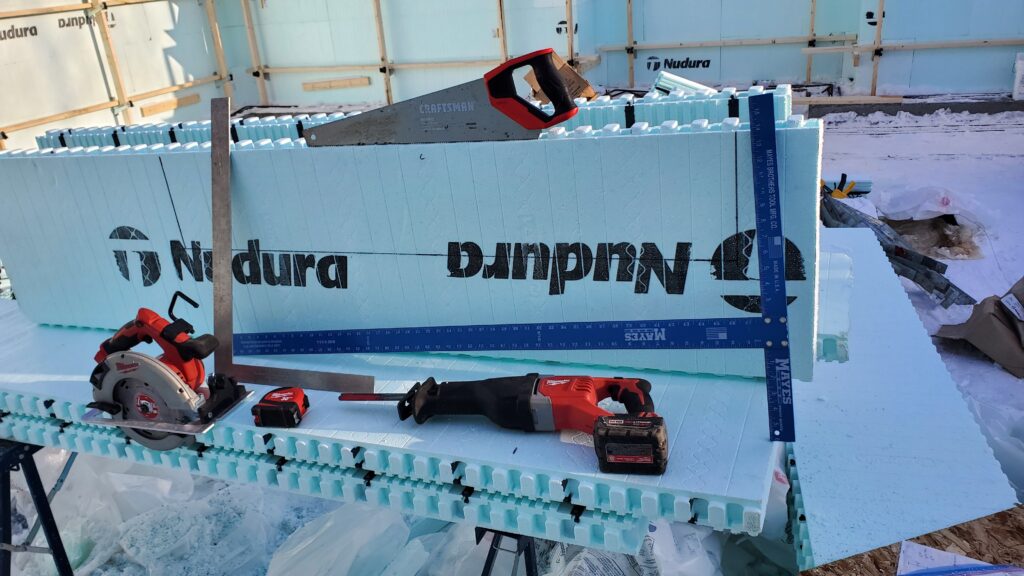Embarking on an ICF construction project in Edmonton comes with its unique set of challenges and triumphs. One critical phase that demands precision is the marking and cutting of window and door openings. In this blog post, we’ll explore the art of setting up a dedicated station for this task, ensuring efficiency, accuracy, and a seamless workflow.
The Foundation of Precision: A Proper Setup
1. Designing Your Workspace:
Before diving into the cutting process, take the time to design a dedicated workspace. This involves selecting a flat and stable surface, ideally at a comfortable working height. The objective is to create an environment where every tool and material is within arm’s reach.
2. Quick Access to Materials:
Organize your ICF blocks systematically for easy access. Having them nearby and in an orderly fashion streamlines the workflow, minimizing downtime as you move from one block to the next.
3. Essential Tools at Your Fingertips:
A well-organized tool station is paramount. Lay out your tools, including a circular saw, level, square ruler, and any other tools specific to your cutting needs. Ensure each tool has its designated place for quick retrieval.
4. Window Rough Opening (R/O) List:
A detailed window rough opening list is your blueprint for precision. Having this list accessible at your station aids in double-checking measurements and ensuring that each opening aligns with the project’s specifications.
The Step-by-Step Setup Process:
1. Lay Out the ICF Blocks:
Position the ICF blocks close to your workspace, arranging them in an order that corresponds to their placement in the construction. This strategic layout minimizes the need to search for specific blocks during the cutting process.
2. Arrange Tools Systematically:
Create a designated space for each tool. For instance, have a section for the circular saw, another for the level, and a dedicated spot for the square ruler. This systematic arrangement prevents tools from getting misplaced and maximizes efficiency.
3. Verify Measurements Against R/O List:
Before initiating any cuts, cross-verify your measurements against the window rough opening list. This extra step ensures that each cut aligns precisely with the project requirements.
4. Adequate Lighting:
Ensure your workspace is well-lit. Proper lighting is often underestimated but plays a crucial role in maintaining accuracy during the cutting process.
The Benefits of a Well-Organized Setup:
1. Time Efficiency:
A well-thought-out setup minimizes the time spent searching for tools or materials, streamlining the process and enhancing overall efficiency.
2. Precision in Every Cut:
Quick access to tools and accurate measurements result in precise cuts, contributing to the structural integrity and aesthetic appeal of the finished ICF construction.
3. Seamless Workflow:
A well-organized station facilitates a smooth workflow, allowing you to move through each opening with confidence and without unnecessary interruptions.
Conclusion:
In the realm of ICF construction, precision is king. By dedicating time to set up an efficient marking and cutting station, you lay the foundation for success. Whether you’re a seasoned builder or a homeowner in Edmonton, mastering this setup ensures that your ICF project progresses seamlessly, bringing you one step closer to a structurally sound and visually impressive outcome. Contact us if you have any questions.
